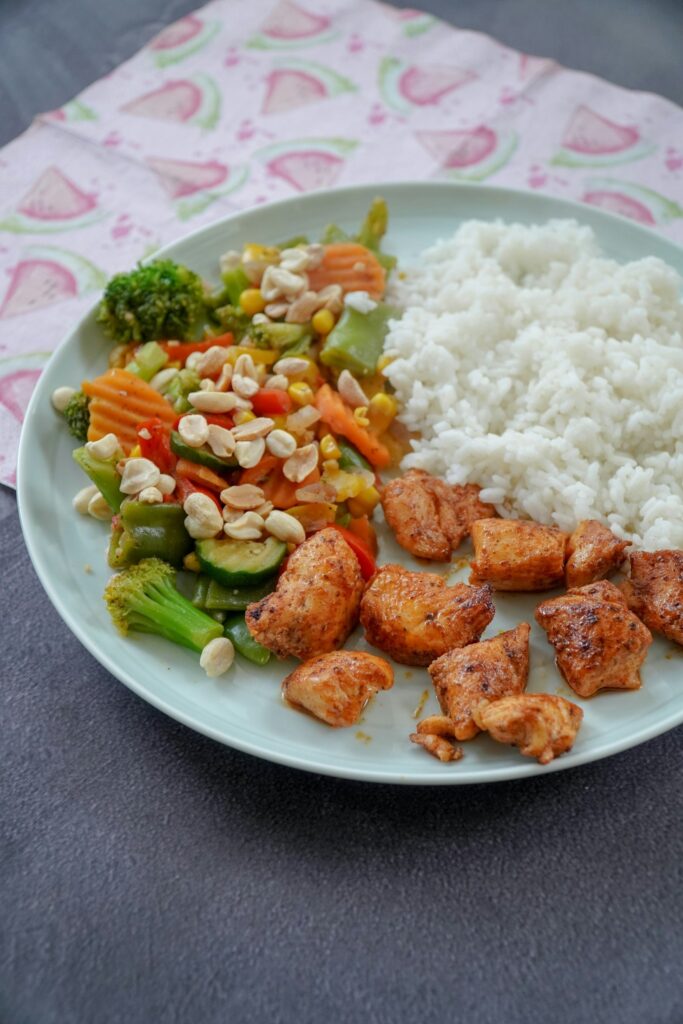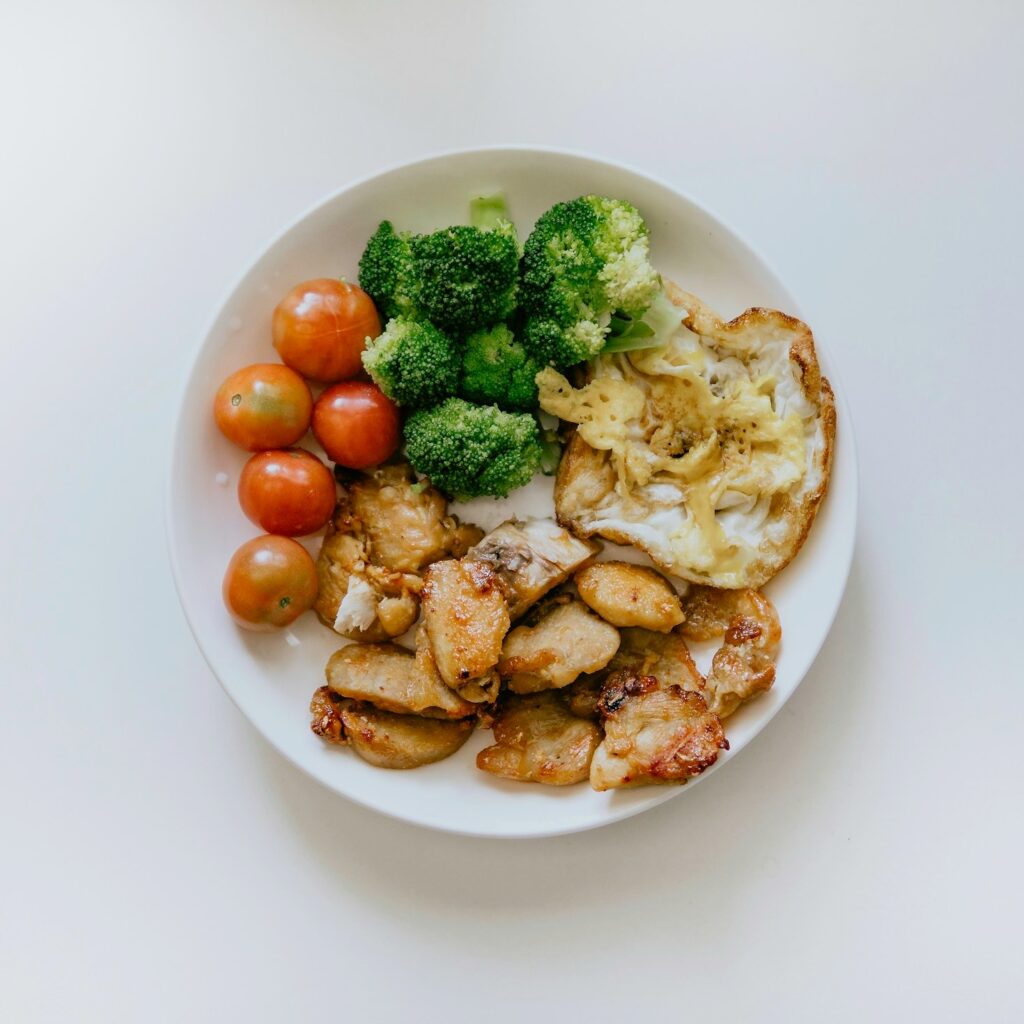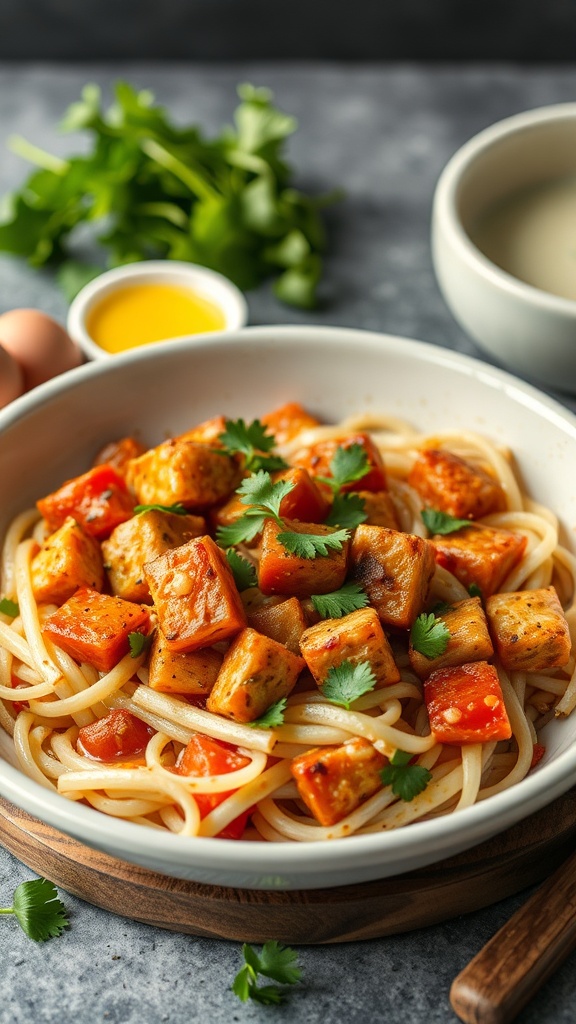
How to Cook 5 Ingredient Meals Without Fancy Equipment
Cooking delicious meals doesn’t always require a pantry full of ingredients or fancy equipment. If you want quick, tasty dishes with minimal fuss, five-ingredient meals are the way to go. Let’s explore how you can whip up these simple yet satisfying meals using just the essentials.
When you think of cooking with five ingredients, consider the staple items you can always keep on hand. Here’s a checklist of ingredients that can serve as the foundation of your meals:
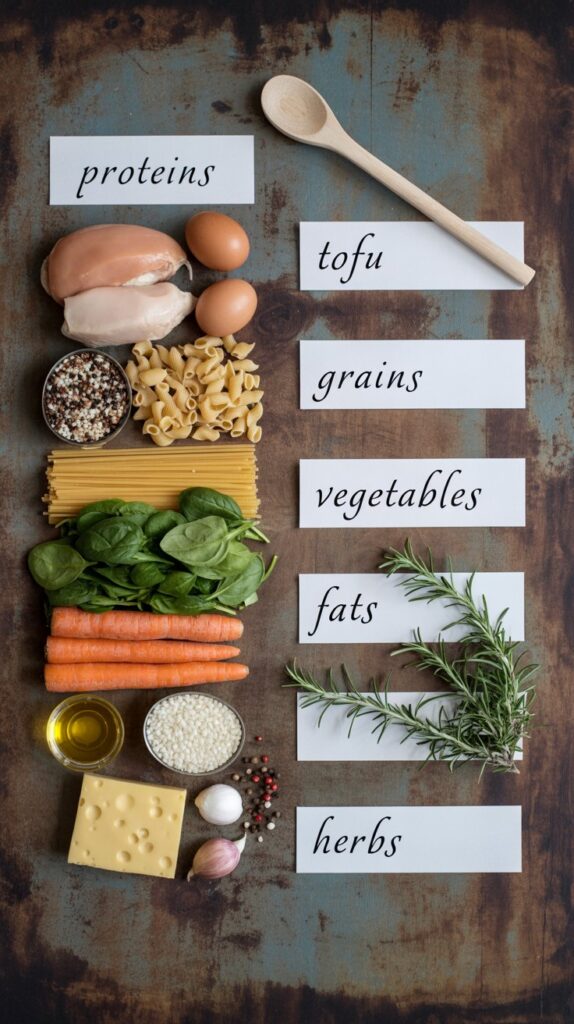
- Proteins: Chicken, beans, eggs, tofu
- Grains: Rice, pasta, quinoa
- Vegetables: Spinach, bell peppers, carrots
- Fats: Olive oil, butter, cheese
- Herbs/Spices: Salt, pepper, garlic, basil
With these ingredients, you can create a wide variety of meals without relying on multiple gadgets. Here’s how to make the most of each ingredient, so you can enjoy fuss-free cooking.
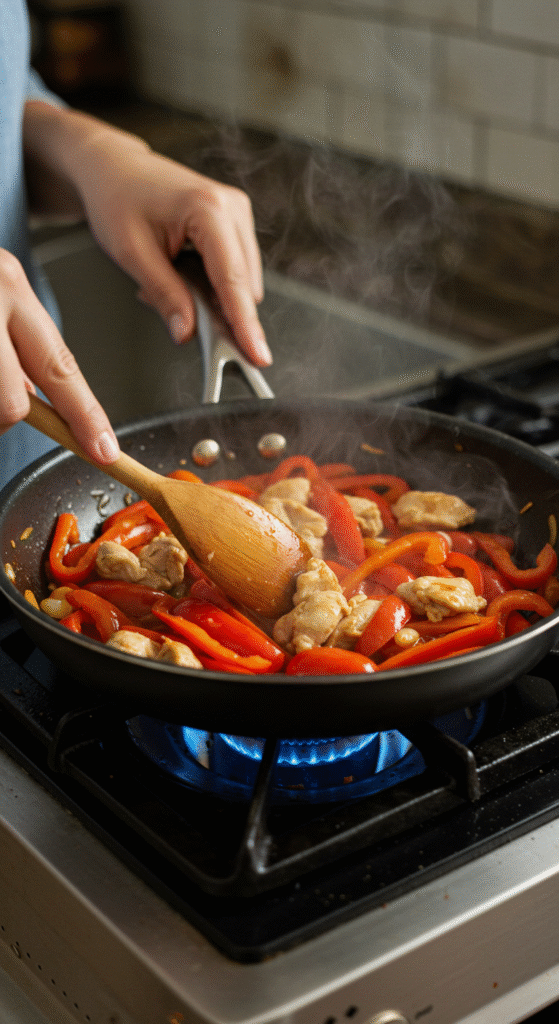
1. Choose Your Protein: Start by selecting a protein as the centerpiece of your meal. If you are in a rush, canned beans or pre-cooked chicken can speed up the process. For instance, a simple stir-fry with chicken and bell peppers can be made in under 30 minutes. Just sauté the bell peppers in a skillet, add the chicken, and season with garlic, salt, and pepper.
2. Add Grains for Heartiness: Grains can make your meal more filling. Cooking quick grains like rice or quinoa makes meal prep simple. For example, cook quinoa according to its package instructions. Mix in sautéed spinach and a protein of your choice, drizzled with olive oil, for a nutritious dish.
3. Incorporate Fresh Vegetables: Adding vegetables not only boosts nutrition but also adds flavor. You can roast, steam, or sauté them, depending on your preference. For instance, toss carrots and onions with olive oil, salt, and herbs, then roast in the oven until tender. Serve these veggies alongside grilled chicken for a well-rounded plate.
4. Don’t Skip the Flavor: Use simple spices or herbs to elevate your meal. Fresh basil or dried oregano can transform a basic pasta recipe. Combine cooked pasta, a can of diced tomatoes, garlic, and basil for a quick dish. Just simmer everything together in a pan for about 10 minutes, and you’ll have a delicious meal.
5. Finish with Fats or Cheese: A touch of fat from olive oil or butter adds richness to any meal. You can also sprinkle cheese for added flavor. A simple omelet made with eggs, spinach, cheese, and a dash of salt can be both quick and satisfying.
Here’s a table showcasing some easy five-ingredient meal ideas:
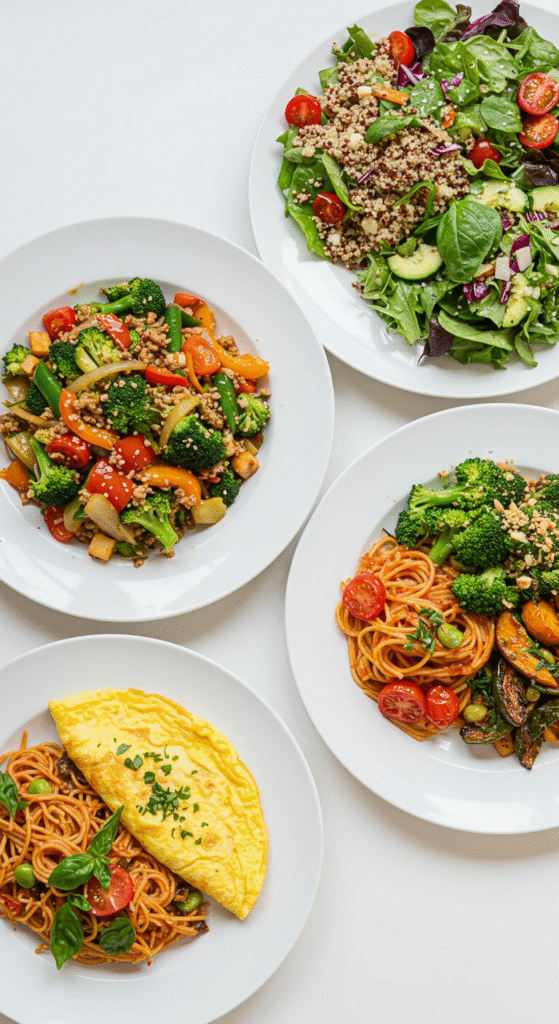
| Meal | Ingredients | Cooking Method |
|---|---|---|
| Chicken Stir-Fry | Chicken, bell peppers, garlic, olive oil, rice | Sauté |
| Quinoa Salad | Quinoa, spinach, canned beans, olive oil, lemon | Cook and mix |
| Veggie Omelet | Eggs, spinach, cheese, butter, salt | Fry |
| Pasta with Tomatoes | Pasta, diced tomatoes, garlic, basil, cheese | Simmer |
| Roasted Vegetables | Carrots, potatoes, olive oil, salt, herbs | Roast |
When you focus on five simple ingredients, cooking becomes less daunting. You don’t need the latest appliances or endless recipes to enjoy good food. Instead, embrace creativity, and don’t be afraid to mix and match your ingredients. With just a few basic items, you can prepare satisfying meals that are both delicious and nourishing.
Remember, the key to mastering five-ingredient meals is to keep it simple. Trust your instincts, trust your taste buds, and most importantly, have fun cooking! Whether it’s a simple stir-fry or a pasta dish, you’ll find that making meals without fancy equipment can be not only doable but incredibly rewarding.
The Benefits of Simplifying Your Cooking Routine
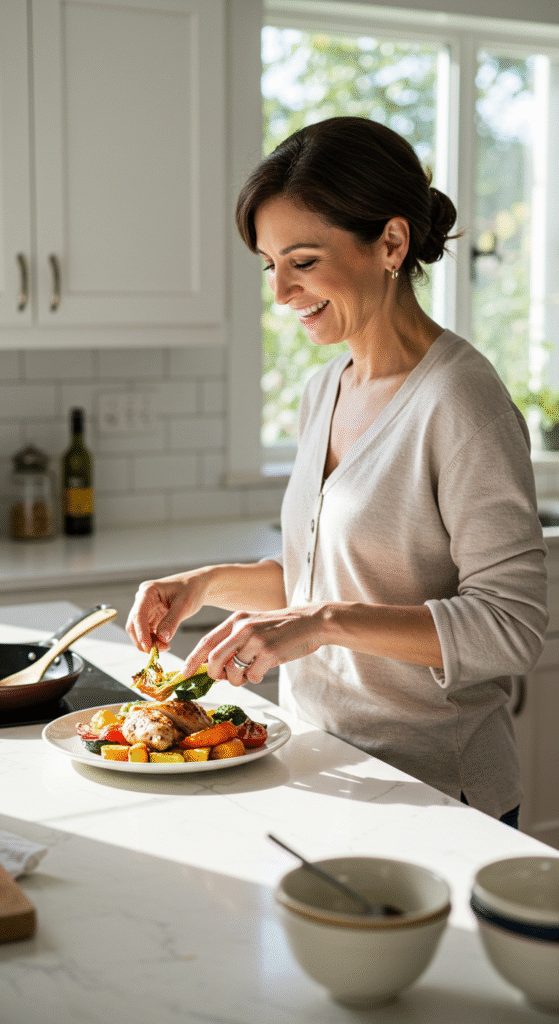
Cooking can often feel overwhelming, especially when faced with endless recipes and complicated techniques. Simplifying your cooking routine brings a host of benefits that can enhance not just your meals, but your overall cooking experience. By focusing on a simplified approach, you can save time, reduce stress, and ultimately enjoy the process of creating delicious dishes.
One key advantage of simplifying your cooking routine is time efficiency. When you strip down your meal prep to the essentials, you’re able to spend less time in the kitchen while still whipping up appetizing dishes. Here are ways how simplifying can save you time:
- Fewer Ingredients: Meals with fewer components often require less prep time. With just five ingredients, you can create satisfying meals without the fuss.
- Streamlined Cooking Process: Fewer ingredients can lead to fewer cooking stages. You won’t need to wait for multiple items to sauté or roast; you can often combine everything in one pot or pan.
- Faster Cleanup: Less cooking inevitably means less to clean up afterward, allowing you to enjoy your meal without a daunting pile of dishes looming.
Another significant benefit is that simplified cooking presents an opportunity to become more creative. When you limit the number of ingredients, you encourage yourself to think outside the box. You may find unexpected flavor combinations or new ways to enhance ordinary items. Consider these points:
- Increased Focus: With a smaller list of ingredients, you can concentrate more on developing flavors rather than worrying about elaborate techniques.
- Ingredient Versatility: By consistently using a few staple items, you’ll get to learn their flavors and how they interact, leading to better cooking skills over time.
- Emphasis on Quality: Fewer ingredients often lead to a focus on quality. Selecting high-quality produce or proteins can significantly elevate your dish.
Health is yet another major advantage of a simplified cooking routine. Often, complex recipes involve pre-packaged or processed items that can contain preservatives and excessive sodium. By choosing simple, fresh ingredients, you have control over what goes into your meals:
- Better Nutrition: Cooking from scratch with whole foods typically results in healthier meals. You get to include more vegetables, fruits, and lean proteins.
- Portion Control: Preparing uncomplicated meals allows you to manage portion sizes more easily, supporting a balanced diet.
- Allergen Awareness: Simple cooking lets you avoid allergens or ingredients that you or your family may need to stay away from.
For those who seek a sustainable lifestyle, simplifying your cooking routine can also reduce waste. Fewer ingredients mean less leftover food that may go unused. Think about these aspects:
- Smart Shopping: When you focus on a few core ingredients, you can shop more intentionally and minimize impulse buys.
- Less Food Waste: With just a handful of items, you’re more likely to use everything you purchase, leading to reduced waste.
Simplifying your cooking routine can also foster a greater sense of peace and mindfulness. The kitchen can be a chaotic place, but a streamlined approach allows for a more enjoyable cooking environment:
- Less Stress: A simplified process reduces overwhelming feelings, as you won’t feel compelled to follow a long list of instructions.
- Mindful Eating: Cooking fewer ingredients lends itself to better focus, allowing you to engage with the food you’re preparing and, subsequently, eating.
Ultimately, simplifying your routine empowers you to embrace cooking rather than fearing it. You can begin using simple recipes that feature just five ingredients to see how easy and rewarding this approach can be. Let’s explore a quick example:
| Recipe | Ingredients | Preparation Time | Cooking Time |
|---|---|---|---|
| One-Pan Chicken and Veggies | Chicken Breasts, Olive Oil, Broccoli, Bell Peppers, Garlic | 10 minutes | 20 minutes |
| Pasta Aglio e Olio | Spaghetti, Olive Oil, Garlic, Red Pepper Flakes, Parsley | 5 minutes | 10 minutes |
By adopting a simplified cooking routine, you can enjoy a multitude of benefits. From time savings and health improvements to greater creativity in the kitchen, there are many reasons to simplify. Embrace the joy of cooking with fewer ingredients, and watch how your meals transform into flavorful, satisfying experiences.
Budget-Friendly Ingredients for Quick Meals
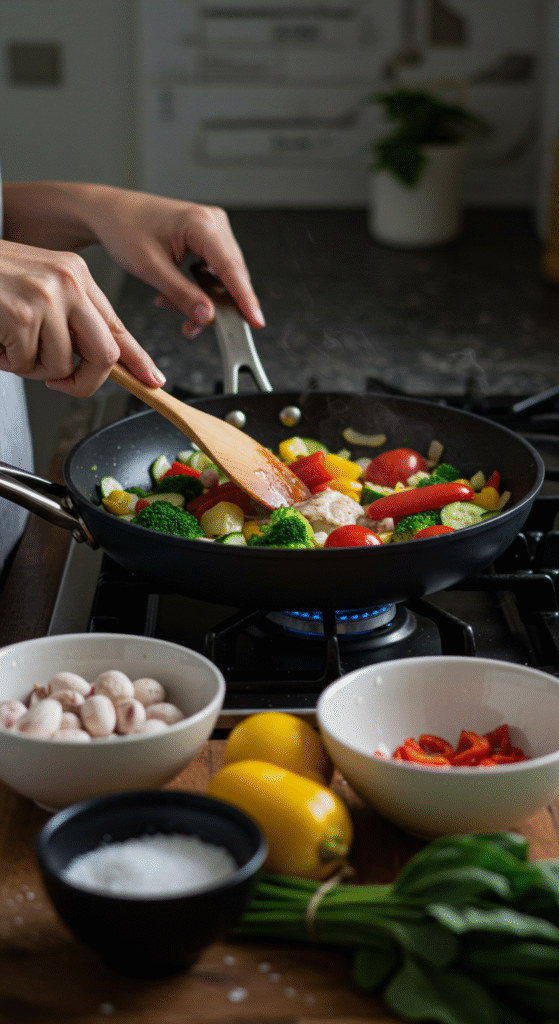
When you’re in a pinch for a meal but want to stick to a budget, finding the right ingredients can make all the difference. You can create delicious and satisfying meals without breaking the bank. The key is to focus on affordable, versatile ingredients that can be combined in various ways. Here are some budget-friendly ingredients you can use for quick meals.
Grains
Grains are an excellent base for many dishes and tend to be inexpensive. They can be stored for a long time and prepared in little time. Common grains that fit the bill include:
- Rice: Brown or white rice can be cooked in about 20 minutes. Use it as the base for stir-fries, salads, or side dishes.
- Pasta: Whether you choose spaghetti, penne, or any other type, pasta cooks quickly and pairs well with various sauces and toppings.
- Quinoa: A protein-rich grain that cooks in about 15 minutes. It’s perfect for salads or as a side dish.
Vegetables
Vegetables are nutritious and can add flavor, texture, and color to your meals. Buying seasonal produce can save you money and provide fresher options. Here are some quick-cooking vegetables:
- Broccoli: This vegetable can be steamed or stir-fried in just a few minutes, which makes it a great option for quick meals.
- Spinach: Fresh or frozen spinach cooks down quickly and can be added to soups, pastas, or omelets.
- Carrots: Slice or dice them for a quick addition to stir-fries or soups.
Proteins
Protein is essential for a balanced meal. There are several budget-friendly options that can be prepared quickly:
- Eggs: They are inexpensive, versatile, and quick to cook. You can scramble, fry, or boil them for a protein boost.
- Canned beans: Beans like black beans or chickpeas are affordable and require little preparation. They can be added to salads, soups, or stir-fries.
- Tofu: A plant-based protein that’s usually inexpensive. It can be quickly sautéed or added to soups for some extra texture.
Frozen Foods
Frozen foods can be a lifesaver when you’re on a budget and short on time. They are often cheaper than fresh options and have a longer shelf life. Some good choices include:
- Mixed vegetables: A mix of frozen veggies can be added to stir-fries or casseroles without the hassle of chopping.
- Frozen fruits: Great for smoothies or as toppings for yogurt or oatmeal, frozen fruits are both affordable and nutritious.
Flavor Boosters
Don’t underestimate the importance of good flavor in your meals. Here are some inexpensive seasoning options:
- Spices: Basics like salt, pepper, garlic powder, and paprika can make a significant difference in taste without costing much.
- Broth: Using vegetable or chicken broth instead of water can enhance the flavor of grains and soups.
- Herbs: Fresh or dried herbs like parsley, basil, or oregano can elevate the taste of any meal.
Simple Recipes Using Budget-Friendly Ingredients
With these ingredients in hand, you can whip up numerous quick meals. Here are a few ideas:
| Meal | Ingredients | Cooking Time |
|---|---|---|
| Vegetable Stir-fry | Rice, frozen mixed vegetables, soy sauce | 15 minutes |
| Chickpea Salad | Canned chickpeas, spinach, tomatoes, dressing | 10 minutes |
| Quinoa Bowl | Quinoa, broccoli, tofu, soy sauce | 20 minutes |
| Pasta Primavera | Pasta, seasonal vegetables, olive oil, garlic | 15 minutes |
By focusing on these budget-friendly ingredients, you can create nutritious meals without spending a lot of money or time. With a little creativity and planning, you’ll find that great meals don’t always require fancy equipment or a long list of ingredients. Enjoy cooking simply and affordably!
Time-Saving Techniques for Aspiring Chefs
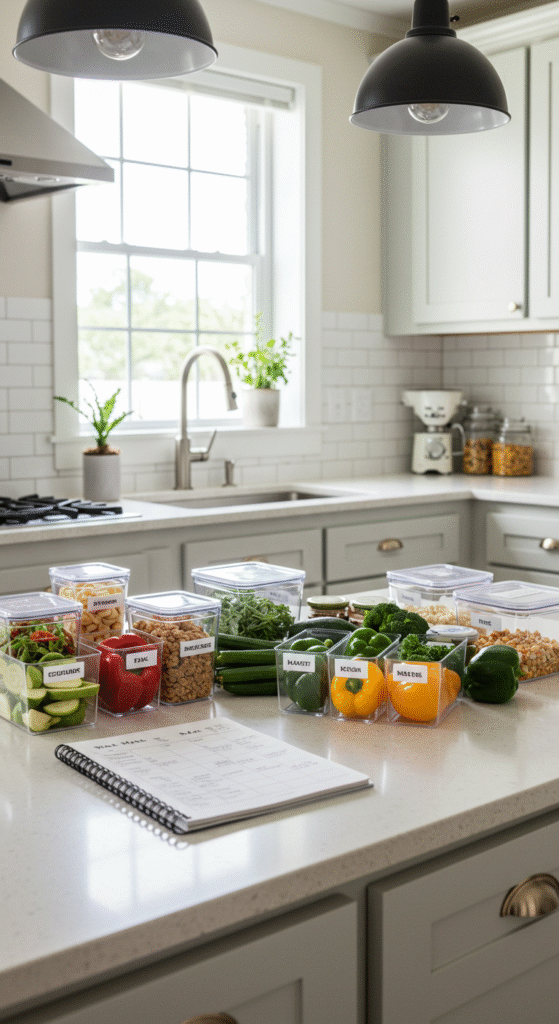
If you’re an aspiring chef, you want to spend more time creating delicious meals and less time worrying about your efficiency in the kitchen. Time-saving techniques can make a huge difference. Here are some valuable tips and tricks to elevate your cooking experience.
Meal Prep Like a Pro
One of the best ways to save time while cooking is through meal prep. By planning your meals in advance, you can streamline the cooking process. Here’s how to effectively meal prep:
- Plan Your Menu: Decide on recipes for the week and create a shopping list.
- Batch Cook: Prepare larger quantities of food that can be divided into portions and frozen for later use.
- Pre-Cut Ingredients: Chop vegetables and meats ahead of time. Store them in airtight containers to keep them fresh.
- Use Quality Containers: Invest in good storage containers that are freezer and microwave safe for easy reheating.
Invest in Essential Kitchen Tools
You don’t need a lot of fancy gadgets to cook efficiently, but having a few essential tools can save you time. Consider these must-haves:
- Sharp Knives: A good chef’s knife can make prep work fast and enjoyable.
- Cutting Board: Having multiple cutting boards for different ingredients helps avoid cross-contamination and speeds up the experience.
- Non-stick Skillet: Perfect for a quick sauté or frying with minimal cleanup.
- Slow Cooker or Instant Pot: These appliances allow you to set it and forget it, with delicious results waiting for you.
Utilize Time-Saving Cooking Techniques
Different cooking methods can greatly affect your efficiency in the kitchen. Try these techniques to save time:
- One-Pan Meals: Simplify cooking and cleanup by preparing entire meals in a single pan.
- Oil and Vinegar Marinades: Marinate proteins while you prep other items. This infuses flavors without adding extra cooking time.
- High-Temperature Roasting: Cook vegetables and meats together at higher temperatures to expedite cooking and enhance flavor.
Embrace Convenience Items
Convenience doesn’t have to mean sacrificing quality. Using pre-prepped ingredients can save you time. Here are some great options:
- Pre-Cut Vegetables: Many grocery stores offer fresh, pre-cut vegetables ready to use, cutting down on prep time.
- Frozen Fruits and Vegetables: They often contain more nutrients than fresh produce that has traveled long distances.
- Store-Bought Sauces and Marinades: Save time by using these to enhance the flavors of your home-cooked meals.
Practice Mise en Place
This French culinary phrase means “everything in its place.” It’s a technique that helps chefs prepare dishes efficiently. Here’s how to implement it:
- Gather Ingredients: Before starting to cook, collect all ingredients and equipment needed for your recipe.
- Organize Workstation: Keep your space clean and organized. It’s easier to cook quickly when clutter is managed.
- Measure Ingredients: Pre-measuring your ingredients reduces the need for multiple bowls and helps you keep track of what you need.
Streamline Cleanup Process
Cleaning as you go can save you a lot of time after your meal. Here are some strategies:
- Wash as You Cook: Rinse off utensils and cutting boards immediately after using them.
- Use Minimal Dishes: Choose recipes that require fewer bowls and utensils, or utilize the same items for multiple steps.
- Enlist Help: If you’re cooking for a group, assign tasks. A second pair of hands makes a world of difference.
By incorporating these time-saving techniques into your culinary routine, you’ll find yourself spending less time in preparation and more time enjoying what you love—cooking! Each step helps you become more organized, efficient, and ultimately, a better chef. So roll up your sleeves and enjoy your time in the kitchen!
Creative Combinations: Transforming Leftovers into New Dishes
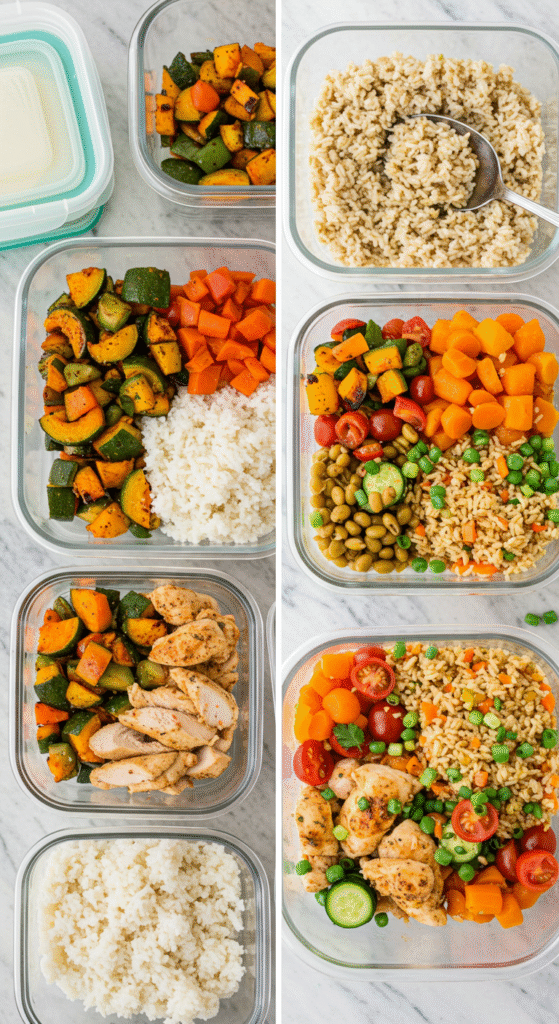
Have you ever looked at your leftovers and wondered what to do with them? Transforming leftovers into exciting new dishes is a fantastic way to minimize waste and maximize flavor. Whether you have some roasted vegetables, rice, or chicken, you can get creative in the kitchen. With a bit of imagination, you can turn your leftovers into something entirely new and delicious.
One key to effective leftover transformations is understanding flavor profiles and textures. It’s essential to think about how the leftover ingredients can mix and match to create a cohesive dish. Here are some creative combinations to inspire you:
1. Leftover Vegetables
Vegetables that have been cooked but not eaten can be easily reimagined in a fresh new way. Here are some ideas:
- Vegetable Stir-Fry: Toss leftover veggies into a hot skillet with some soy sauce and spices for a quick stir-fry.
- Veggie Omelette: Whisk eggs and add your vegetables for a hearty breakfast.
- Soup Base: Chop leftover veggies and simmer with vegetable broth to make a comforting soup.
2. Leftover Rice
Rice is incredibly versatile and can serve as a foundation for many dishes. Consider these combinations:
- Fried Rice: Sauté leftover rice with some eggs, soy sauce, and whatever veggies you have at hand.
- Stuffed Peppers: Mix rice with beans, salsa, and cheese, then stuff into halved bell peppers and bake.
- Rice Salad: Combine rice with diced cucumbers, tomatoes, and a lemon vinaigrette for a refreshing side dish.
3. Leftover Meat
Whether it’s chicken, beef, or pork, leftover meat can be the star of a new meal. Here are some tasty ideas:
- Tacos: Shred your leftover meat, add taco seasoning, and serve it in tortillas with your favorite toppings.
- Meat Sandwich: Layer sliced meat with cheese, avocado, and greens between two slices of bread.
- Curry: Chunk leftover meat and simmer in coconut milk with curry paste for a warming dish.
4. Combining Leftovers
If you have various leftovers, consider making a mixed dish. Here are some ideas for combining different types of leftovers:
| Leftovers | New Dish |
|---|---|
| Leftover Meat + Roasted Vegetables | Hearty Casserole: Combine with cream and bake until bubbly. |
| Rice + Leftover Veggies | Vegetable Fried Rice: Sauté and add soy sauce. |
| Pasta + Veggies + Meats | Pasta Bake: Combine with cheese and bake. |
5. The Power of Sauces and Spices
Don’t underestimate the importance of adding sauces and spices to your leftover creations. A dash of the right seasoning can elevate the dish:
- Hot Sauce: Great for giving leftover meats and veggies a kick.
- Pesto: Mix with pasta and leftover veggies for a burst of flavor.
- Dressings: Use dressings to brighten up salads made from leftover ingredients.
When transforming leftovers, think about utilizing what you have in an innovative way. Cooking doesn’t have to be complicated or expensive. By focusing on what’s in your fridge and getting inventive, you can create meals that are not only delicious but also satisfying.
Next time you find yourself with an assortment of leftovers, remember these ideas. Cooking creatively with your leftovers can lead to delightful surprises and a more sustainable kitchen. So roll up your sleeves and start experimenting; your taste buds will thank you!

Conclusion
Cooking delicious meals doesn’t have to be complicated or require expensive gadgets. By focusing on 5 ingredient meals, you can simplify your cooking routine and save both time and money. Selecting budget-friendly ingredients can transform your shopping experience, allowing you to create healthy, satisfying meals without breaking the bank.
Time is a precious commodity, and using time-saving techniques can help even the busiest individuals enjoy home-cooked meals. Simple strategies, like prepping ingredients in advance or mastering a few essential cooking methods, can make meal prep a breeze. You don’t need a long list of culinary tools; a few versatile items can do the trick.
Getting creative with your cooking can also lead to amazing results. Transforming leftovers into new dishes not only saves food but also sparks innovation in the kitchen. You might find that yesterday’s dinner can easily become today’s exciting lunch with just a few tweaks.
Embracing these methods encourages a more enjoyable cooking experience that is accessible to everyone. Whether you’re an experienced cook or just starting your culinary journey, remember that good food can come from simplicity. By focusing on what truly matters—quality ingredients and a sprinkle of creativity—you can turn meal preparation into something fulfilling. So go ahead, embrace the art of 5 ingredient meals, keep your cooking uncomplicated, and relish in the joy of creating tasty dishes that fit your life perfectly.

